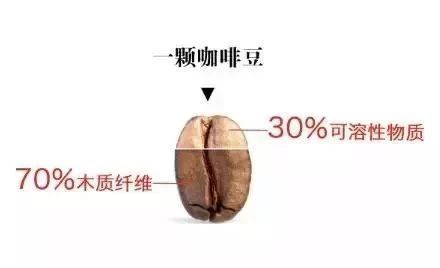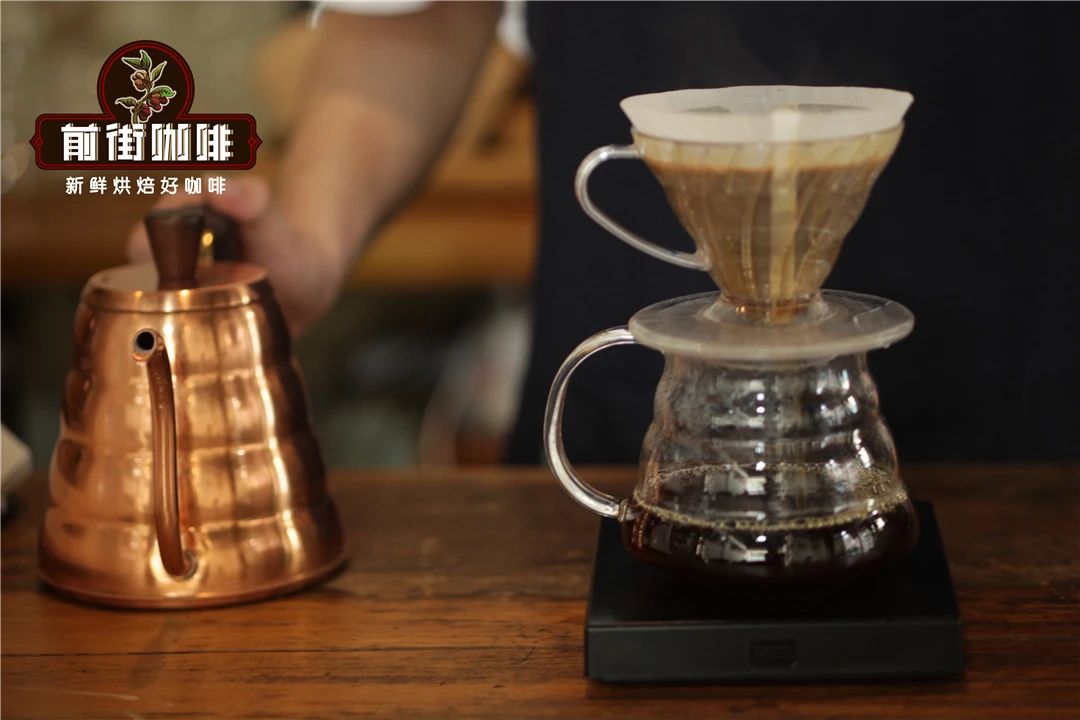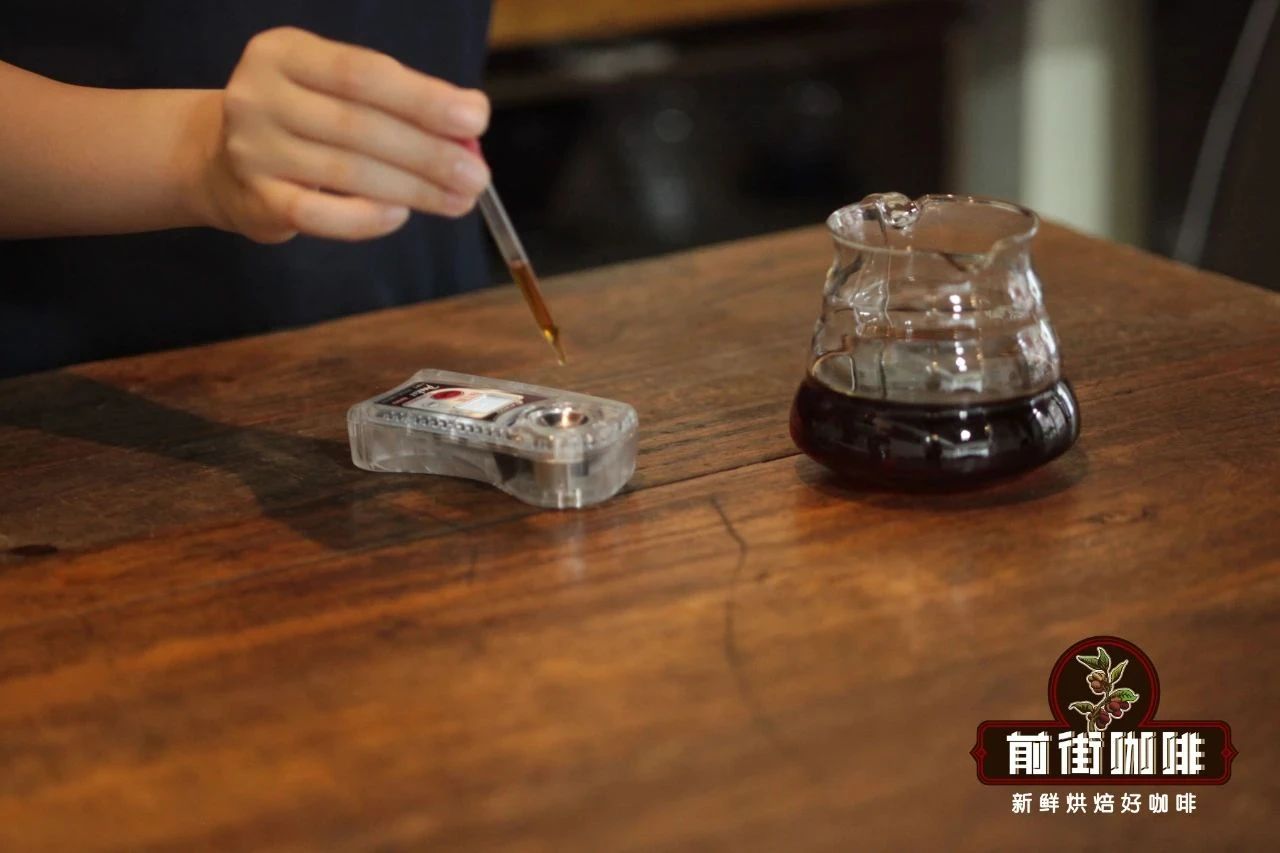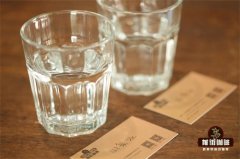How to calculate the extraction rate of hand brewed coffee? How do you know if a cup of coffee is too good?
Coffee beans are not all soluble in water. Only 30% of the substances in a coffee bean are soluble in water, while the remaining 70% are insoluble substances such as wood fibers. Therefore, the maximum extraction rate of coffee is only 30%, but in most cases, the extraction rate of coffee can not be so high, but how can we know the specific extraction rate!

How to calculate the extraction rate of coffee?
The extraction rate of coffee refers to how much coffee is released from the coffee bean (powder) after brewing. In this case, we can use the traditional method to simply calculate the extraction rate of coffee (which is a little time-consuming)!
Now that we know that the coffee powder will dissolve the coffee substance when it comes into contact with water, that is, the weight of the dissolved substance is equal to the weight lost by the coffee bean (powder), then we only need to dry the brewed coffee powder and weigh it. Then the weight less than the original coffee bean (powder) is the weight of the extracted coffee substance, so:
Weight of extracted coffee matter / weight of raw coffee bean (powder) = extraction rate
Take a chestnut: if you use 15 grams of coffee powder to brew, and then dry the coffee grounds until completely dry, and then weigh 12.3 grams, then the weight of the substance soluble in water is 2.7 grams. Then the extraction rate of this cup of coffee is 2.7 / 150.18 (18%).

However, the disadvantages of this method are also very obvious. first, it takes a long time, and the second is the low accuracy of data, which highlights the degree of loss and the fine degree of weighing in the coffee grounds drying process. Most common electronic scales can be as fine as 0.1 grams. The error of 0.1 grams will cause an extraction rate error of 0.7%.
Therefore, the extraction rate calculation method that we often use at present is related to the concentration of coffee. Of course, to use this method, you must first have an instrument to detect the concentration (TDS detector)!

First of all, let's find out what the concentration and extraction rate represent respectively.
[concentration] indicates the proportion of "extracted coffee substance" to the total coffee liquid in a cup of coffee.
[extraction rate] indicates the proportion of "extracted coffee substance" to the total weight of coffee beans.
(one main body is coffee liquid, the other is coffee beans or coffee powder)
According to these conditions, we know that:
Coffee solution concentration = weight of extracted coffee substance / weight of coffee liquid
Coffee extraction rate = weight of coffee extracted / weight of coffee bean (powder)
Then combining the above formula, the formula for calculating the extraction rate of coffee is as follows:
Coffee extraction rate = coffee solution concentration × coffee liquid weight / coffee bean (powder) weight
Through the concentration meter, we can easily know the concentration of coffee liquid, so we can easily calculate the extraction rate of coffee. However, it should be noted that drip coffee because the coffee powder itself will absorb twice as much water, so
Coffee liquid weight = water injection-2 × coffee bean (powder) weight
Take chestnut as an example: if 15 grams of coffee powder is used to brew coffee in the proportion of 1:16 powder and its concentration is 1.37% measured by the concentration meter, then the extraction rate of this coffee is 1.37% × (240-2 × 15) / 15 × 19.18%.

What kind of coffee is over-extracted?
I believe everyone has encountered this situation, have tasted a sip of coffee, "bitter, this cup is too outstanding." In fact, bitterness is not entirely equal to over-extraction, not to mention the difference in everyone's sensitivity to bitterness, coffee has an unusual scorched taste, bitterness can not be all tied to the "over-extraction".

First of all, the term "over-extraction" is based on the golden cup (Golden Cup), that is, the extraction range beyond the golden cup criterion. The golden cup criterion holds that when the extraction rate of coffee is in the range of 18-22%, the extracted coffee substances are more delicious, while more than 22%, it is possible to extract unpleasant bitter flavor substances, therefore, excessive extraction essentially describes coffee with an extraction rate of more than 22%. Coffee with a general extraction rate of more than 22% will show a bitter taste, and over time will equate bitterness with over-extraction.
Important Notice :
前街咖啡 FrontStreet Coffee has moved to new addredd:
FrontStreet Coffee Address: 315,Donghua East Road,GuangZhou
Tel:020 38364473
- Prev

Manual coffee entry-level filter cup recommends the correct use of smart cup brewing coffee grinding degree water temperature
Professional coffee knowledge exchange more coffee bean information please follow the coffee workshop (Wechat official account cafe_style) guide ah! It's too hard to inject water around! The current is so difficult to control. There is no coffee rookie can be easily used, easy to operate filter cup recommended! After reading this message, the barista in front street immediately moved out a coffee brewing apparatus with a set of immersion extraction and filter extraction.
- Next

Will the water quality change affect the flavor of coffee extraction? What kind of water should be used to make a single black coffee by hand?
Professional coffee knowledge exchange more coffee bean information please follow the coffee workshop (Wechat official account cafe_style) A cup of coffee consists of 98% water and 2% flavor substances. Water is used as a solvent to dissolve and extract the flavor substances of coffee powder. in addition to water temperature, water quality will also affect the extraction of coffee.
Related
- Beginners will see the "Coffee pull flower" guide!
- What is the difference between ice blog purified milk and ordinary milk coffee?
- Why is the Philippines the largest producer of crops in Liberia?
- For coffee extraction, should the fine powder be retained?
- How does extracted espresso fill pressed powder? How much strength does it take to press the powder?
- How to make jasmine cold extract coffee? Is the jasmine + latte good?
- Will this little toy really make the coffee taste better? How does Lily Drip affect coffee extraction?
- Will the action of slapping the filter cup also affect coffee extraction?
- What's the difference between powder-to-water ratio and powder-to-liquid ratio?
- What is the Ethiopian local species? What does it have to do with Heirloom native species?

